JICA・AfCFTA Secretariat・AUDA-NEPAD Collaboration Co-organising OSBP Seminar for the Implementation of AfCFTA
Day:2025.03.04
event |
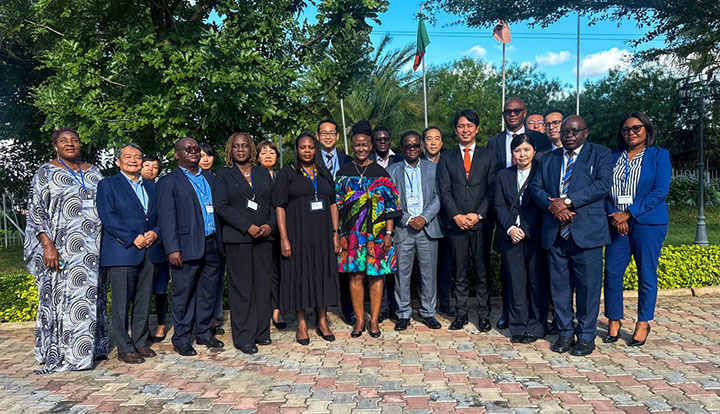
Participants from JICA, the AfCFTA Secretariat, and AUDA-NEPAD (Photo credit: AUDA-NEPAD)
JICA, AfCFTA Secretariat, AUDA-NEPAD, East African Community (EAC), Common Market for Eastern and Southern Africa (COMESA), Zambia Revenue Authority (ZRA), and the Kazungula Bridge Project Office (KBPO)
For the first time, JICA, the AfCFTA Secretariat, and AUDA-NEPAD convened for a practical-level discussion, engaging in a comprehensive knowledge-sharing seminar focused on the implementation of One-Stop Border Posts (OSBPs). This seminar brought together 21 participants, including key representatives from JICA, AfCFTA Secretariat, AUDA-NEPAD, COMESA and EAC, fostering a platform for in-depth discussions on trade facilitation and regional integration across Africa. The exchanges were particularly timely, as they contributed to the preparations for TICAD 9, reinforcing the collective commitment to enhancing cross-border efficiency and maximizing impact of corridor development across the continent. After the OSBP Seminar, the participants had a chance to visit the Kazungula OSBP to deepen their understanding of the importance of OSBP.
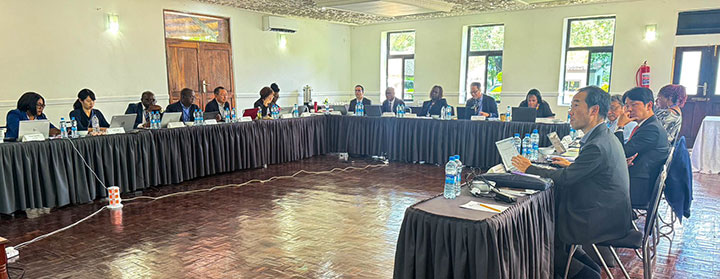
Engaging and constructive discussions were held among participants during the OSBP seminar (Photo credit: AUDA-NEPAD)
In this seminar, marking the first practical-level discussions among JICA, the AfCFTA Secretariat, and AUDA-NEPAD, productive exchanges took place on trade facilitation efforts and challenges on the ground.
Each organisation presented its role, activities, and achievements in trade facilitation. Challenges such as insufficient digital infrastructure and issues with corridor management were highlighted. Successful regional initiatives, such as the EAC’s Single Customs Territory (SCT) and COMESA’s projects, were discussed as potential models for continent-wide expansion through AfCFTA Secretariat and AUDA-NEPAD.
Differences in trade facilitation evaluation methods among the organisations were discussed:
The discussion facilitated a deeper understanding of these differences in evaluation methods among the organisations. It was recognised that developing a unified evaluation framework, while leveraging complementary approaches, would enhance coordination and improve the effectiveness of trade facilitation efforts across the continent.
Capacity development for stakeholders involved in trade facilitation was also a key focus of the discussion, with participants emphasising the need to strengthen training programs to enhance the skills of customs officers and border officials. Additionally, the discussion highlighted the importance of aligning trade and customs policies, ensuring policy coherence to maximise the operational efficiency of OSBPs, and securing stronger ownership for the proper maintenance and management of facilities. This seminar provided greater clarity on each organisation’s approach to trade facilitation, marking a significant step toward strengthening collaboration among the three institutions.
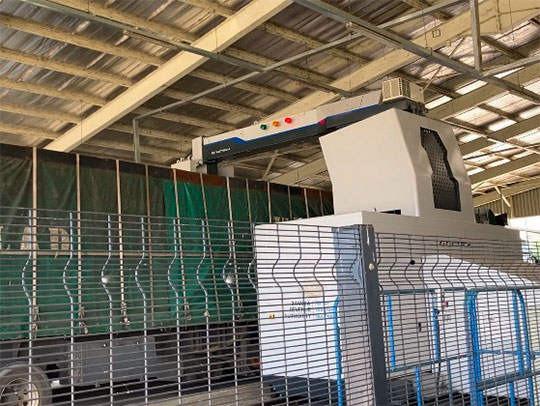
The use of cargo scanners installed at the Kazungula OSBP (Zambia-Botswana border) has reduced border clearance time.
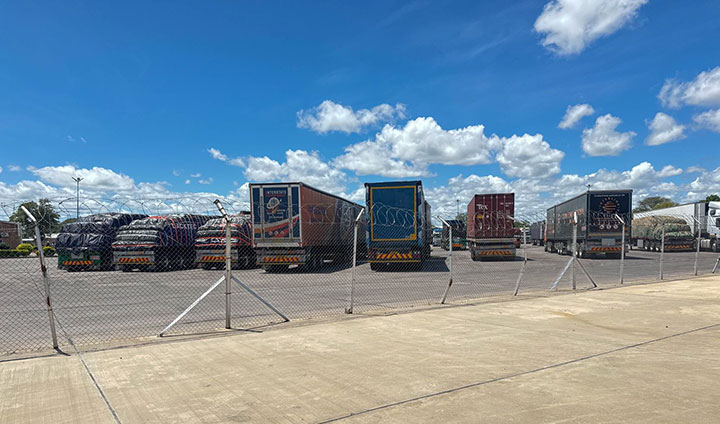
The spacious parking area at the Kazungula OSBP is organised with designated sections for cargo trucks and passenger vehicles, ensuring an efficient traffic flow and greatly reducing congestion (Photo credit: AUDA-NEPAD)
On the day following the OSBP seminar, participants visited the Kazungula OSBP to observe its operations. The North-South Corridor, which passes through Botswana and Zambia, is a vital transport route within the Southern African region. Historically, however, the Zambezi River, which forms the border between Botswana and Zambia, created a significant bottleneck that hindered the smooth and efficient movement of goods and people across the region.
In 2021, the completion of the Kazungula Bridge at the borders of Zambia, Botswana, Zimbabwe, and Namibia marked a major milestone in improving regional connectivity. This bridge has greatly enhanced the flow of traffic along the North-South Corridor, contributing to the facilitation of trade and the overall economic development of the region.
JICA, through Yen Loans, has supported the establishment of the Kazungula OSBP, which is strategically positioned adjacent to the Kazungula Bridge. In addition to financial assistance, JICA has provided technical assistance to ensure the effective operation of the OSBP. This support spans both infrastructure and operational aspects, further enhancing the border post’s efficiency in managing cross-border trade.
The location where the borders of four countries converge is a unique case at the global level, making the Kazungula OSBP an exceptional example of cross-border cooperation and infrastructure development. Participants highlighted that the lessons learned from this unique case could serve as an invaluable reference for implementing similar border management solutions in other multi-border areas across Africa. The success of this initiative offers a model for streamlining cross-border trade processes and strengthening regional integration on the continent.
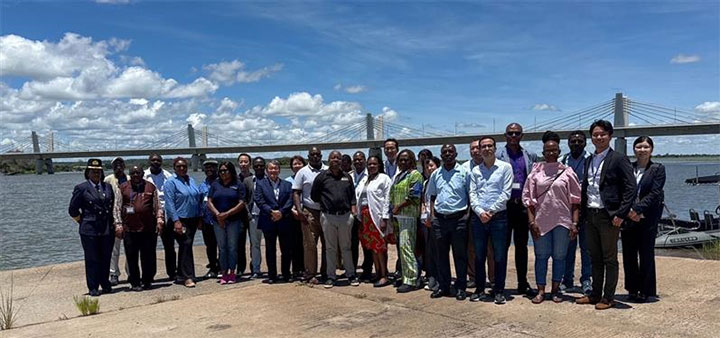
A group photo taken with the Kazungula Bridge, completed in 2021, in the background. The Zambezi River, which the bridge spans, is a unique location where the borders of four countries—Zambia, Botswana, Zimbabwe, and Namibia—intersect (Photo credit: AUDA-NEPAD)
At the Kazungula OSBP, participants received briefings from the Zambia Revenue Authority (ZRA) and the Kazungula Bridge Project Office (KBPO). Following the presentations, they toured the various facilities within the OSBP, including the cargo terminal, customs processing areas, and cargo scanners, observing the improvements made. Participants also compared the old border facilities with the newly established OSBP in 2021, deepening their understanding of the enhanced functionality and efficiency of the OSBP.
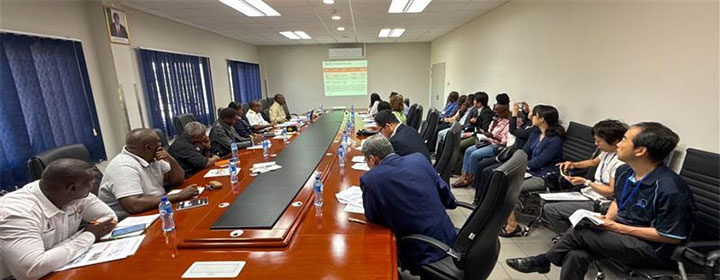
A discussion at the Kazungula OSBP. After receiving an explanation from the ZRA and KBPO on the improvements in trade, logistics, and revenue between Zambia and Botswana along the North-South Corridor, participants engaged in an exchange of views (Photo credit: AUDA-NEPAD)
The Kazungula border, which used to be required several days to cross, has undergone a dramatic transformation with the construction of the bridge and the establishment of the OSBP. It now serves as a critical logistics hub supporting the North-South Corridor and has contributed to the acceleration of regional trade. Below is an overview of the transformation of the Kazungula border, highlighting the "before and after" of this significant change.
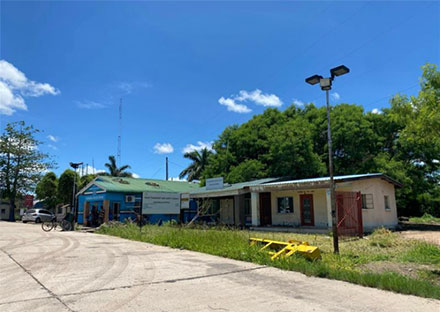
[Before] The old Kazungula border facility

[After] The OSBP facility has streamlined customs and immigration procedures into a single point of entry. Serving as the gateway between Botswana and Zambia, it plays a key role in facilitating trade along the North-South Corridor. (Photo credit: AUDA-NEPAD)
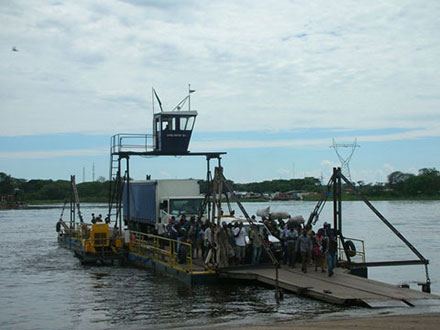
[Before] Before the Kazungula Bridge was built, ferry services were the only means of crossing the Zambezi River. This resulted in significant delays and congestion, particularly with freight trucks, creating a bottleneck that hindered smooth traffic flow along the North-South Corridor.

[After] The Kazungula Bridge, which spans the Zambezi River, now provides an efficient connection between Botswana and Zambia along the North-South Corridor. It was officially opened in 2021 (Photo credit: AUDA-NEPAD)
For most of the participants from the AfCFTA Secretariat and AUDA-NEPAD, it was their first time that they visited the Kazungula Bridge and OSBP. The seminar not only enhanced understanding of each organisation’s activities but also provided a deeper learning experience through the on-site visit, highlighting the substantial impact of OSBPs. JICA received high praise for its leadership in organising the seminar.
Through technical discussion and by observing the operational status of the Kazungula OSBP, cooperation among JICA, the AfCFTA Secretariat, and AUDA-NEPAD was further reinforced. This also facilitated a deeper mutual understanding with COMESA and EAC, strengthening collaboration for trade facilitation and regional integration across Africa.
Participants expressed the desire for this seminar to serve as a model case and emphasised the importance of continuing future knowledge-sharing events that combine seminars with on-site visits to broaden understanding. The two-day seminar and site visit concluded with a reaffirmed commitment from JICA to continue supporting Africa’s regional integration and trade facilitation, playing a pivotal role in sustainable development.
scroll